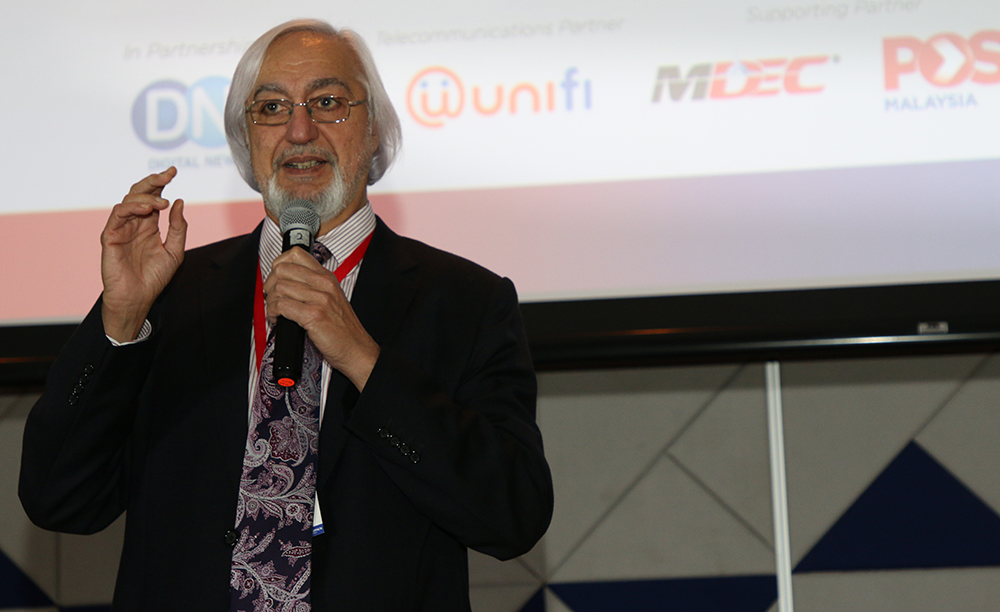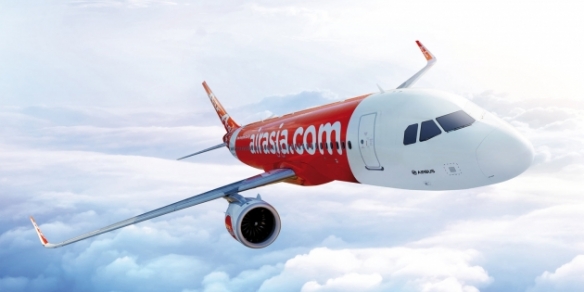CEO Conference 2019: How Asia Pacific University scaled to a US$120mil campus
By Kiran Kaur Sidhu January 25, 2019
- Education institutions must be fit for the purpose and run efficiently
- The university’s profitability is the by-product of its quality and reputation
“THE experience of building up a tiny organisation and scaling it up into a large conglomerate – it was all a dream. That’s how it normally starts,” explained Dr Parmjit Singh (pic), the chief executive officer of Asia Pacific University of Technology & Innovation (APU).
With a vision in mind, Parmjit walked into Wisma Semantan years ago equipped with a notepad to sketch his ideas in and a newspaper to line the bare floor where he sat.
“I didn’t start with an architect. I drew the floorplan I had in mind in a notebook. The next day, I came back with chalk and marker pens to draw on the floor, erased it and re-drew it.”
At the CEO Conference 2019 organised by DNA in partnership with Leaderonomics, Parmjit took to the stage to share some key insights in a session entitled ‘How APU Leverages its IT Assets & Grew From a Shoplot to a RM500 million World Class Campus’.
He elaborated on his thought process of building his business – one of which is staying focused. With a background in technology, he has never deviated from the field, “I remained focused because that is my expertise.”
The name Asia Pacific University was a conscious choice on Parmjit’s part. “It meant something because I wanted to cover the region within the four- to five-hour flight perimeter.” Within the first ten years, he set up four campuses overseas in Pakistan, Sri Lanka and India.
Despite having offers to grow beyond the region to Africa and the Middle East, Parmjit chose to remain focused and stick to the plan. He explains, “There must be a reason behind your plans. Anything beyond a four-hour flight, we couldn’t support it.”
Meeting consumer demand is key
During his talk, Parmjit also went on to dispel a myth that education is a big, money-making business. “It is not good business, it is bad business,” he candidly says. “Everything is regulated. All courses need to go through the accreditation process. There are standards to meet.”
In addition to that, the fees that education institutes charge are also regulated by the Ministry of Education. “If you apply for an increase in fees, the opposite might happen. We may end up with a decrease based on their method of calculating averages and other metrics.”
Because of this fact, Parmjit says education institutes must be positioned like any other business enterprise. “It has to be fit for its purpose and must run efficiently.”
Making profits through the high pricing of services is not the way to make money, he believes. Parmjit refers to a speech by former Singaporean prime minister, Lee Kuan Yew, in 1984 on how Singapore Airlines (SIA) could ensure profitability.
According to the premier, service and safety are paramount in an airline industry afflicted by stiff competition. “It is the planes in the air which operate at high loading factors that make money. Air fares are the same everywhere but prioritising these two aspects will attract people.”
With the same principles applicable to education, Parmjit says: “The fees that APU charges is in the second quartile of private universities but the cost per student that we run is in the top quartile of the industry, since technology is not cheap. Our core areas are engineering and IT.”
As such, APU’s strategy to remain profitable is rooted in meeting consumer demand. “Every child that goes to university enters with a dream to become accountants, engineers or whatever their chosen career may be. If universities do not deliver that dream, they are not meeting consumer demand.”
APU’s overarching key performance indicator (KPI) is the employability of its students. “If employers are hiring our graduates, it simply means we are doing the right thing. Our research ranking may be important, but it is not the solution.”
He advises the crowd: “Define yourself and how you ultimately measure your success. Do not measure your success where it doesn’t matter and doesn’t count.”
Using technology and human resources to optimise operations
Being one of the most profitable universities in the industry, Parmjit shares: “That has not been achieved by overcharging or undermining what we are supposed to do. It is achieved by optimisation. We use technology as our backbone to run our business.”
APU operates on a fully modular structure comprising 2,600 modules, 12,000 students on campus and examinations scheduled every day.
“Every week, students are issued new timetables and assigned different classrooms. All this is done via a backbone system from a control room where staff look at screens and sometimes override decisions the system might make.”
The system allocates classrooms based on classroom capacity and student numbers per subject. There is also a human resource skills matrix that the system manages. As a result, Parmjit says: “Our physical resources are used more than 90% and human resources are used evenly to achieve 12-13 lecture hours per week.
Since Parmjit is a non-believer in the hierarchal structure of corporations, APU operates on a matrix basis with 836 staff and no faculties or appointed deans. “There are no departments, it is all fluid. There are no silos. There are schools but everything else cuts across. Creating silos is very expensive.”
Interestingly, Parmjit highlights that the staff at APU are not assessed based on quantitative KPIs. “For the last almost 40 years, profits in this business are the by-product of quality and reputation. As long as we drive quality and reputation and our students are being employed, more people will come.”
CEO Conference: Malaysia Living Dangerously is sponsored by Telekom Malaysia Bhd as Telecommunications Partner, Malaysian Digital Economy Corporation (MDEC) and Pos Malaysia Bhd as Sponsors. The Malaysian SME Association endorsed the conference.
Related Stories :



